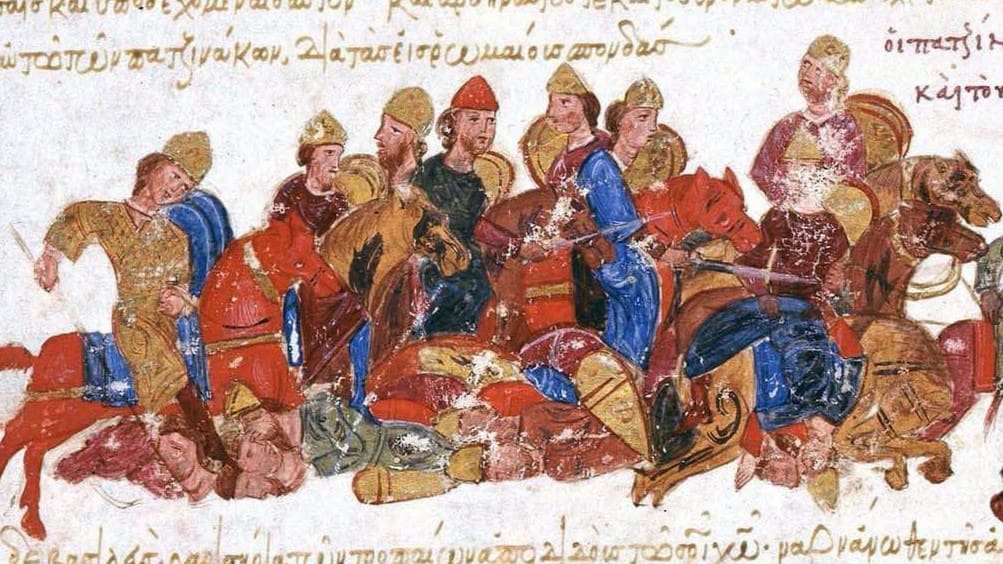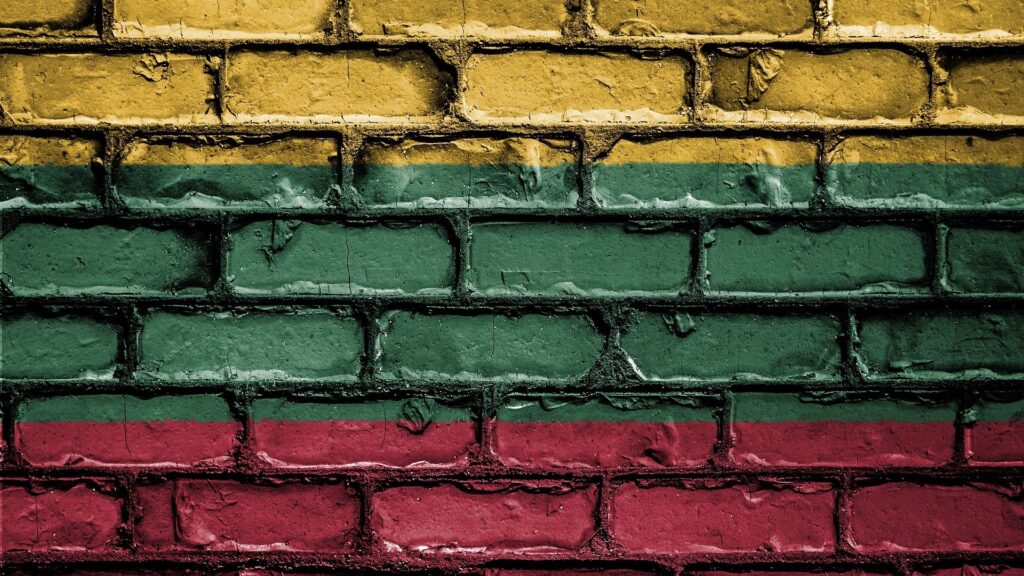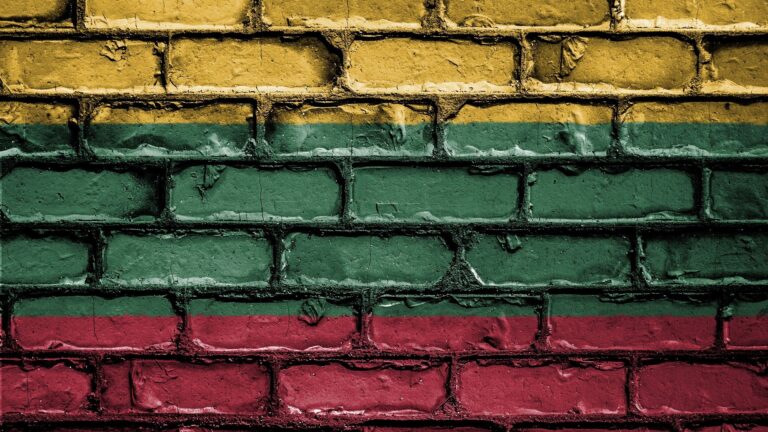The Pechenegs were one of the Turkic-speaking peoples who lived in the immediate vicinity of the Hungarians before Árpád’s conquest. Like the Cumans (and previously the Kabars), the Pecheneg people also merged into the Hungarian ethnicity, increasing its Turkic elements, although, unlike in case of the Cumans (and the associated Iazyges), a Pecheneg–Hungarian ‘double identity’ is not known to this date. The reason for this was probably that the Pechenegs did not arrive in big numbers, but in smaller groups, and they gained land at significantly different intervals in the medieval Kingdom of Hungary.
As a result of changes in the balance of power on the steppe, Pecheneg tribes were mostly absorbed into related peoples (Oghuzes, Cumans, Bulgarians) or into later medieval state formations, such as the Kievan Rus and the Principalities of Moldavia and Wallachia, leaving no continuous identity behind.
But the memory of this people lives on vividly in the sources of medieval Hungarian history.
In his Jāmiʿ al-Tawārīkh (Collection of Chronicles), the Iranian chronicler Rashid-al-Din Hamadani mentions the Pecheneg people as one of the 24 known tribes of the Oghuz Turks, and the Kara–Khanid scholar Mahmud Kashgari in his Dīwān Lughāt al-Turk (The Summary of the Collection of Turkic Languages) calls the Pechenegs ‘a branch of the Oghuz Turks’. [1] Their name ‘kangar’ is also known in connection with the Pechenegs—however, the origin of the name is extremely controversial (some researchers, for example István Vásáry, theorize a Scythian–Iranian connection.)[2]
Immediately before the Hungarian conquest, sources speak about a well-known ‘invasion attack’ that nearly destroyed the Hungarian tribal confederation—the primary source of these events is the work of the Byzantine emperor Constantine VII Porphyrogenitus, De administrando imperio (DAI). According to the emperor’s description, as a result of an unexpected and large-scale attack of the Pechenegs, a tribe of the ‘Turks’ (Hungarians) in Etelköz[3] was ‘on the verge of extinction’—and this attack resulted in the occupying Hungarian tribal confederation’s move to the Carpathian Basin. According to DAI, the primary reason for the attack by the Pechenegs was that another Turkic-speaking tribal confederation, the Oghuz (the ancestors of today’s Anatolian Turks), raided the Pechenegs’ homeland located between the Volga and Aral Sea. They presumably attacked the Hungarians as they were ‘forced’[4] to do so.
Although especially the Hungarian historiography of the second half of the 20th century accepted the statement of DAI regarding the large-scale defeat suffered by the Hungarian Conquerors at the hands of the Pechenegs, according to today’s research, it is disputed that this defeat would have really been of such magnitude.[5] Whatever the truth is regarding the invasion campaigns launched against the Hungarian homeland areas around 893, it seems certain that in the event of a large-scale defeat—or, as the research based on DAI emphasized: in the case of the ‘almost complete destruction’ of the Hungarians’ ‘hinterland’—it would have been very difficult to conquer the Carpathian Basin in such a short period of time; or to win the Battle of Bratislava in 907 against the allied Western powers that invaded Hungary with a desire to ‘destroy’ the power of the Hungarian tribal association.
Although our sources mention even more Pecheneg attacks against the Kingdom of Hungary during the reign of Stephan I (997–1038) between 1014 and 1017, and we have information about an invasion in 1068 in alliance with the Oghuz (Uz) tribes, most of the Pechenegs formed an alliance with the later Kingdom of Hungary and settled in the country’s territory.
There are early reports of this alliance. Already during the reigns of Prince Géza and Saint Stephen I Pechenegs were dispersed in the country together with the tribal military and auxiliary peoples, such as Szeklers and Kabars. Later, the Pecheneg tribes still came to the territory of the Hungarian Kingdom on several occasions, and their names are still preserved in settlement names today.
‘Medieval certificates mention Pechenegs in about half a hundred localities in the territory of the Kingdom of Hungary. In Transdanubia, there were Pecneheg settlements in the Fertő and Rába regions; in a part of Fejér county called ‘‘Sárvidék’’; in the southern part of Lake Balaton; in the Danube–Száva region; in the counties of Nyitra, Csanád, Tolna and Győr. The seat of the Pecheneg princedom was probably in Fejér county, and the ancestors of the Beseny people of Mosony were the border guards who settled there. Many localities and vineyard names in the ‘‘Sárrét’’ region prove their presence…Continuous Pecheneg-inhabited areas were in Bihar, in the Körös region and in the central Tisza region. Cece, Alap, Vajta, Tab, Kajdacs, Örs are considered to be ancient Peseny settlements. The Pechenegs who lived on the royal estate and enjoyed freedom owed military service to the king and were directly under the authority of the palatine. They were governed by their own chiefs; they served mainly as light cavalry.’[6]
The relationship between the Hungarians and the Pecheneg tribes was by no means unilaterally hostile.
Anonymus noted already about Prince Taksony—probably the son of Prince Zolta (Zsolt), grandson of Árpád—that he might have had a wife of Pecheneg descent, thus Pecheneg elements could have entered the Hungarian ruling dynasty early on. According to the Gesta Hungarorum, ‘Zolta brought a wife for his son Taksony from the land of the Cumans.’ However, the ethnonym ‘Cuman’ was not yet in use in the 10th century—according to the relevant data, the Cuman–Sary–Kipchak tribal association was not located in the immediate vicinity of the Hungarians at that time. But a few hundred years later, when Anonymus wrote the chronicle, the Cumans occupied the former settlement area of the Pechenegs, while other eastern peoples and tribes ruling the steppe, such as the Volga Bulgarians or the Khazars, occupied areas farther from the ‘land of the Cumans’.[7]
The best-known leader of the Pecheneg is Tonuzoba (according to some etymologies, the name means: ‘Wilde Boar-Father’). In all probability, during the reign of Taksony (955–970), Tonuzoba lived among the Hungarians. He became the ancestor of the Tomaj clan, and his residence was around the haven of Abád (present-day Abádszalók). Other sources associate him also with the ancestor of the Szalók, Bő, Örkény, Maglód, and Tátony clans.
The oldest estate of the Tomaj clan was actually located in the ‘Tiszántúl’ region of Hungary (Kemej), part of Heves county, where a Benedictine monastery founded by the clan (Tomajmonostora) also stood—and Anonymus actually locates the lineage of the Pecheneg leader in this area. From the Tomaj family, a well-known figure was Dénes Tomaj, the later palatine,
who fought bravely against the Mongolian invasion of Hungary in 1421 and fell in the Battle of Muhi.
Tonuzoba was probably the head of the Pecheneg tribe ‘Talmács’. The name of this tribe (or ‘genus’) appears the most frequently in the nomenclature and the list of settlements of the time—this is probably where Talmács (eg present-day Nagytalmács in Transylvania) and Tolmács (in today’s Nógrád county) can be traced back to. Gesta Hungarorum mentions about Tonuzoba that he was not inclined to accept Christianity, so Prince Géza (Géza of Hungary) forced him to make a decision around 970. Anonymus also describes in detail what happened to the leader who stubbornly adhered to his ancestral faith (the Pechenegs probably also followed the ancestral religion of the Turkic peoples of the steppe, the Tengri faith, a sort of ‘shamanism’):
‘At the same time, there came from the same region a most noble warrior, Heten by name, to whom the duke gave no small lands and other properties. Duke Thocsun bore a son, Géza [Geysam] by name, the fifth duke of Hungary. And at that time, there came from the land of the Pechenegs [Byssenorum] a warrior of ducal stock [de ducali progenie], whose name was Thonuzoba, father of Vrcund, from whom the Thomoy kindred descends, to whom Duke Thocsun gave to dwell in a land in the districts of Kemej [Kemey] as far as the Tisza where is now the harbour of Obad. This Thonuzoba lived to the times of the holy King Stephen, the grandson of Duke Tocsun. And when the holy King Stephen preached the words of life and baptized the Hungarians, Thonuzoba, vain in belief, refused to be a Christian, and he was buried alive with his wife at the harbour of Obad lest by baptism he and his wife should live with Christ in eternity, but Vrcun, his son, having been made a Christian, lives with Christ for ever.’[8]
This reference by Anonymus—even though the Tonuzoba legend is not mentioned in other works of our chronicle literature—is accepted by the great majority of Hungarian historians as authentic historical data.
The coat of arms of the Tomaj clan, derived from Tonuzoba, depicts a golden griffin in a blue field.[9] The presence of the griffin indicates a strong steppe symbolism: the griffin decoration appears among the Avars (as in the ‘griffin and tendril’ people described by Gyula László). This mythological animal with a lion’s body and eagle’s beak already appeared in the 6th century in the periphery of sedentary empires, and also played a role in Byzantine sources related to the peoples of the steppes, especially in Theophylact Simocatta’s reports, in connection with the ‘migration of the ogurs’. The meaning of the griffin on the steppe is the same as that of the dragon—and the ruling clan of the Asian Huns is also the ‘dragon clan’ (called ‘Luan-ti’ in Chinese sources).[10]
While investigating the religion and spiritual culture of the Pechenegs, it is interesting to note that, besides Tengrism, it is possible to count on the survival of Nestorian Christianity, widespread in Central and Inner Asia (also appearing in the later Mongols), from where the core of the Pecheneg tribes probably originated. If certain data from the Codex of Kassa (of disputed authenticity) published by Jenő Mátyás Fehér can be trusted, the record of a 13th century inquisitional trial reveals that a Pecheneg ‘magician’ performed a ‘pagan baptism’, which may refer to the Nestorian ceremony: ‘the witness lists the pagan baptism…he also baptized young Christians according to the old customs…performs the rites of the ancients’.[11]
Although the Pechenegs have no visible identity, they are part of the Hungarian nation to this day: their medieval history may have ended, but they have played an important role in Hungarian ethnogenesis. Great clans of Pecheneg origins, like the Tomaj, rose to high nobility, exemplifying self-sacrifice when it came to defending the country from foreign invaders.
[1] See, James Kelly; Maḥmūd, Kāshgarī; Türk Şiveleri Lügatı (Dīvānü Luġāt-It-Türk), Duxbury, Tekin, 1982. According to the most common theory, their language belonged to the Kipchak–Turkic languages, but the theory that they spoke an OgHuz–Turkic language, just like the Turks in Anatolia today, is increasingly gaining ground.
[2] See István Vásáry, A régi Belső-Ázsia története. https://terebess.hu/keletkultinfo/belso.pdf, accessed 18 June 2024.
[3] ’Etelköz’: contemporary Hungarian homeland with disputed locality.
[4] Quoted in Attila Kovács: ’Ősellenségtől a szövetségesig: fejezetek a magyarok és a besenyők történetéből.’ https://www.academia.edu/39756085/%C5%90sellens%C3%A9gt%C5%91l_a_sz%C3%B6vets%C3%A9gesig_fejezetek_a_magyarok_%C3%A9s_a_beseny%C5%91k_t%C3%B6rt%C3%A9net%C3%A9b%C5%91l, accessed 17 June 2024.
[5] See eg ’Honfoglalás: nem volt nagy besenyő támadás.’ https://www.youtube.com/watch?v=XemCLOPI8bI, acessed 17 June 2024.
[6] Ildikó Hankó, ’A besenyők.’ https://demokrata.hu/velemeny/a-besenyok-63117/, accessed 17 June 2024.
[7]Anonymus, Gesta Hungarorum, Transl. Martin Rady. https://discovery.ucl.ac.uk/id/eprint/18975/1/18975.pdf, accessed 17 June 2024.
[8] Ibid
[9] See. Gyula Kristó (ed.), Korai magyar történeti lexikon : 9–14. század, Budapest, Akadémiai Kiadó, 1994.
[10] In the interpretation of Béla Szász, ‘[The] dynasty listed in Chinese sources as Luan-ti (Hilien-te, Luan-te) is the royal dynasty of the Asian Huns, which in Hungarian can be called the ‘dragon tribe’ after the ancient totem of the Huns.’ Béla Szász, A húnok története – Attila nagykirály. Bartha Miklós Társaság, Budapest, 1943, 482.
[11] The case of the insidious magician Mocha in Szentgál. In: Mátyás Jenő Fehér, Középkori magyar inkvizíció, Gede testvérek, 1999, 152.
Read more from Zoltán Pető:






